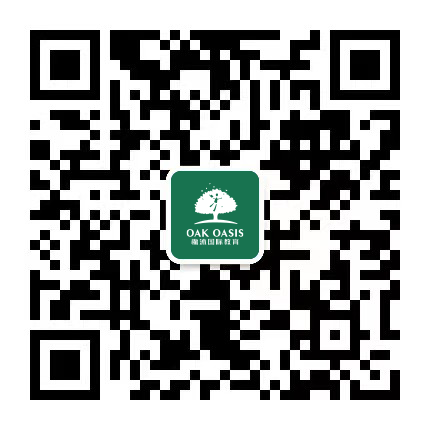虽然距离明年AP考试尚远,但到了年末大家也可以开始未雨绸缪复习工作工作啦。今天给大家带来急救版AP世界历史考试复习攻略,尤其适合抱佛脚选手考前阅读。(文末附AP世界史大事件表)
如何利用考前AP世界历史考试
复习最后一点时间?
AP世界历史是AP历史系列(同系列课程还有AP美国史、AP欧洲史和AP艺术史)中五分率较低、但难度相对简单的课程。
特别是201年改革后,AP世界史删去了所有1200年以前的内容,目前该科目所覆盖的时间跨度为1200年至今(实际上到2000年左右)。
虽然AP世界史覆盖的时间范围有所减少,但其细节程度正逐渐向AP美国史和AP欧洲史靠拢,故要求考生掌握更多细节上的知识点。 所以AP世界历史考试复习还是不能放松的。
AP世界史考纲将课程划分为9个单元和4个时期,其中占比最大的部分为第3至6单元(1450-1900年间)。该科目的主要学习内容包括中世纪末期的政治、宗教与贸易、陆权帝国的兴起、海权帝国的建立、殖民统治、土著抗争、启蒙运动(以及法、美和海地的革命)、工业革命、帝国主义、两次世界大战、冷战、去殖民化运动以及全球化。
第1种同学: 基础不算非常好,但是又不想放弃考试机会,想最后拯救一波AP世界历史考试复习。建议这种同学使用Princeton 或crash course ap world history 。
这两本教材经典好懂,重点也给你画好了,如果愿意投入时间,复习就还不晚。
第2种同学:前期复习得划算不错,后期想冲一把。建议属于这种类型的同学,在最后一周用历年真题为主,看到题目后头脑风暴一下,看会想到哪些内容。然后可以对照范文和答案找一些遗漏的知识点。
考试时应该注意哪些问题?
大家一定要注意时间和文章写作。
选择题部分:55分钟55道题,占总分的40%;所有的选择题都是材料选择题,材料包括但不限于图表、文章节选、地图或者漫画。做题时先看Source和时间,然后再读材料。如果是已经学过的人,往所学知识上联想。
简答题部分:50分钟4道题,占总分的20%;简答题是新增题型,每道题有2-3个子问题。简答题考察的是对材料的理解,包括文章节选、漫画、史学家的观点,看考生能否举出例子支持或反对材料观点。题目问什么回答清楚就可以了,不在多而在精。每个子问题回答2-3句话即可。
AP世界历史涉及哪些知识点呢?
首先,照时间顺序来梳理一下AP世界历史中的重要考点,AP世界历史分为六个历史时期,如下图所示:
Period 1:至大约公元前600年,技术和环境的变化。这章没有特别重要的知识点,只需要按照选择题和short answer questions 来准备就可以了,不会出大题。
考点一:新石器革命和早期农业社会。农业和种植开始改变人类社会,促进了贸易及交通的发展。
考点二:早期农业、种植业和城市社会的发展及其影响。在核心文明中出现了第一批国家、 法律、语言、文学、宗教和神话。
Review Questions :
1.What were the long-term demographic, social, political, and economic effects of the Neolithic Revolution?
2. What is a ‘civilization,’ and what are the defining characteristics of a civilization? How did civilizations develop and grow more complex before 600 BCE? What were the effects of this increasing complexity?
Period 2:大约公元前600年到大约公元600年, 人类社会的组织和重新组织。
考点一:宗教传统的法典化和进一步发展加强了人民之间的联系并进阶了人们的道德标准。宗教信仰影响了男性和女性的社会角色和定位,佛教和基督教宣扬清规戒律而儒教强调孝道。当然,统治者也会用宗教当做维系统治的工具。
考点二:核心国家和帝国的数量和规模得到大发展,同时在继承了早期政治形式的基础上新的技术和帝国统治手段得到了发展。罗马、大汉、波斯帝国、孔雀和笈多王朝出现了他们自身无法解决的政治、文化和管理上的问题,并且最终导致了这些帝国的衰退、灭亡和后继王朝的取而代之。
考点三: 新技术促进了远距离的通信和商品交换。陆路和水路成为东方帝国跨地区贸易、通信、交换的基础。除了商品贸易以外还有人员往来、技术、宗教和文化信仰的交流、农作物和家畜的交换甚至病原体的互相传染。
Review questions:
1. How did religions help strengthen political,economic, and cultural ties within societies?
2. What is an “empire,” and what were empires’common characteristics during the Classical Era?
3. How did Classical era trade networks compare to Ancient era networks? What forces contributed to the changes between the two eras? What was commonly traded along these trade networks
Period 3:从大约公元600年到公元1450年,地区内和地区间的相互影响。
考点一:交通技术的改善和新的商业模式增加了贸易额并扩大了现存和新兴的贸易市场,也进一步推动了跨文化交流。农作物的种子和病原体都随着贸易路线被传播到东半球。
考点二:政权形式的延续和创新及他们间的相互影响。
考点三:不断进阶的经济生产力及其影响,许多地区出现了新型的农业和工业产品。尽管社会结构和生产方式具有延续性,但新的劳动力管理方式和宗教信仰的转变对社会生产方式产生了重要影响。
Review questions:
1. How did trade networks in the post-Classical Era compare to the Classical Era?
2. How did state formations develop in the postclassical era?
3. What were the overall worldwide economic trends?
Period 4:从公元1450年到公元1750年,全球间的相互影响。
考点一:欧洲的绘图和航海技术的兴起、新工具和造船技术的进阶,以及更加完善的地理知识,使跨海及跨洲的贸易成为可能。海外贸易的扩张,加速了宗教的传播和改革实践活动。
考点二:传统农业经营模式发展迅速,种植园不断扩大,劳动力需求增加。这些变化刺激了对原材料和商品的需求。
考点三: 统治者利用武器弹药和军火来巩固和加强他们的统治,并建立横跨东西半球的庞大帝国。贸易路线的竞争、政权的对立、被统治者的反抗都对政权的巩固和扩张构成了威胁。
Review questions:
1.Describe the degree of global ‘interconnection’ after 1500 CE compared to before 1500. What were the overall effects of this change in global interconnectedness?
2. How did agriculture’s role change between 1450-1750? What pre-requisite conditions made these changes possible?
3. How did empires attempt to administer the new widespread nature of their territories? How did the role of Africa, the Americas, Asia, and Europe develop in this new world-wide political order? How did the people of various empires react to their government’s methods?
Period 5:从公元1750年到公元1900年,工业革命和全球融合。
考点一: 工业化彻底改变了商品的生产方式,资本家为扩大生产,寻找原材料和新兴的市场,进一步促进了全球贸易。
考点二: 工业强国建立跨洋帝国。新的种族主义,尤其是社会达尔文主义促进了帝国主义的发展。
考点三: 民族主义、革命和改革。欧洲政治和社会思潮在世界各地传播催生了跨越国界的新思想和新联合。
Review questions:
1. How did Industrialization affect seemingly unrelated fields like social structures, culture,(arts, religion, literature) & the economy?
2. What are the similarities & differences between colonialism and imperialism? How did imperialism affect Europe’s influence around the world?
3. How did both the Enlightenment & colonized peoples’ actions affect political developments after 1750? How did political rebellions affect political structures & ideologies around the world?
Period 6:从1900年至今, 加速的全球变化和重组。此章节重点掌握全球冲突及其后果、全球经济、社会和文化的新概念。
考点一:二十世纪两次世界大战,共产主义政权的兴衰
考点二: 二战后的殖民地自治化运动等导致经济、技术、文化全球化更深一步。
Review questions:
1. How did science affect humans’ conception of the natural world in the 20th century?
2. How has the world’s political order developed since the early 1900s?
3. What new governmental institutions emerged as a result of the 20th century conflicts? What made these new institutions possible? What role did they play in the world during the 20th century?
另外,在每个历史阶段又有不同的侧重点和主题需要注意。想想你在世界史中能不能把同类主题的知识点归结到一起呢?
Theme 1:人类与环境的相互影响,包括人口与疾病、移民、定居模式、生产技术等。(Interaction between humans and the environment)
Theme 2:文化的发展及其相互影响,包括宗教、信仰、哲学和意识形态、科学技术、艺术和建筑等。(Development and interaction of cultures)
Theme 3:政权的建立,扩张和冲突,包括政治结构和管理形式、帝国的建立、民族和民族主义、叛乱和革命、区域性和全球性的结构与组织等。(State building, expansion and conflict)
Theme 4:经济体制的建立, 经济扩张及其影响,包括农业和牧业产品、贸易和商业、工业化、资本主义和社会主义等。(Creation, expansion and interaction of economic systems)
Theme 5: 社会结构的发展和转型,包括男性女性的社会分工及地位、家族和亲戚关系、民族和种族的结构、社会和经济阶层等。(Development and transformation of social structures)
本文对急救版AP世界历史考试复习的介绍就到这里。不管是英国前10还是美国前20的学校,都非常认可及重视AP成绩。但对于申请哈佛、耶鲁、普林斯顿等优质知名大学来说,4-5分的AP成绩才可以换到学分,并且真正带来申请优势。
如果这个目标对你来说距离尚远,点击报名【AP冬季全程班】,以G5藤校为留学目标导向牵引,精准定位学员入学能力,明确与目标分差距,寻找学习过程中的各种障碍的解决方法,启发国际课程思维。
除了课程,你还可以收获——
更多AP学习攻略点击
附AP世界史大事件表:
8000 B.C.E. First agricultural villages
4000 B.C.E. First cities
Beginning of the cultivation of maize in Mesoamerica
3200 B.C.E. Beginning of Sumerian dominance of Mesopotamia
3000 B.C.E. Beginning of agriculture in South America
3000 B.C.E.–1000 C.E. Indo-European migrations
2600–2500 B.C.E. Pyramid construction in Egypt
2500–2000 B.C.E. Height of Harappan society in South Asia
2350 B.C.E. Beginning of regional empires in Mesopotamia
2200 B.C.E. Beginning of Chinese dynastic rule
2000 B.C.E. Beginning of the Bantu migrations
1500 B.C.E. Beginning of Aryan migrations to South Asia
1500–500 B.C.E. Vedic Age in South Asia
1500 B.C.E.–700 C.E. Austronesian migrations
1403–221 B.C.E. Period of the Warring States in China
900 B.C.E. Invention of ironworking in sub-Saharan Africa
800 B.C.E. Establishment of Greek poleis
722 B.C.E. Assyrian conquest of Israel
586 B.C.E. New Babylonian (Chaldean) conquest of Judah
509 B.C.E. Establishment of the Roman republic
336–323 B.C.E. Rule of Alexander of Macedon (the Great)
330 B.C.E. Conquest of Achaemenid Empire by Alexander
20 B.C.E.–180 C.E. Pax Romana
4 B.C.E.–29 C.E. Life of Jesus Christ
300–1100 C.E. Mayan civilization
3rd to 1st centuries B.C.E. Spread of Buddhism and Hinduism from South Asia
206 B.C.E.–220 C.E. Han dynasty
320–550 C.E. Gupta dynasty
476 C.E. Fall of the western Roman Empire
570–632 Life of Muhammad
618–907 Tang dynasty in China
711–1492 Muslim occupation of Spain
750–1258 Abbasid dynasty
960–1279 Song dynasty in China
1054 Schism between the eastern and western Christian churches
1066 Norman invasion of England
1096 First Crusade
11th-15th century Kingdom of Ghana
Swahili cities in East Africa
Kingdom of Great Zimbabwe
13th century Beginning of chiefdoms in Oceania
13th –15th century Empire of Mali
1206–1526 Sultanate of Delhi
1211 Beginning of Mongol conquests
1271–1295 Marco Polo’s travels to China
1279–1368 Yuan dynasty
1289 Founding of the Ottoman dynasty
1325 Founding of Tenochtitlán by the Aztecs
1337–1453 Hundred Years’ War
1368–1644 Ming dynasty
14th –17th century Kingdom of Kongo
1405–1433 Zheng He’s voyages in the Indian Ocean
1441 Beginning of the Portuguese slave trade in Africa
1453 Fall of the eastern Roman Empire
1464–1591 Empire of Songhay
1492 The Reconquest (Spain)
First voyage of Christopher Columbus
1494 Treaty of Tordesillas
1497–1498 Vasco da Gama’s voyage to India
1517 Beginning of the Protestant Reformation
1519–1521 Spanish conquest of Mexico
1526–1858 Mughal dynasty (India)
1532–1540 Spanish conquest of Peru
1545–1563 Council of Trent
1588 Defeat of the Spanish Armada
1600–1867 Tokugawa Shogunate (Japan)
1613 Beginning of the Romanov dynasty of Russia
1643–1715 Reign of Louis XIV of France
1644–1911 Qing dynasty (China)
1750s Beginnings of the Industrial Revolution in England
1756–1763 Seven Years’ War
1768–1780 Voyages of Captain James Cook in the Pacific Ocean
1775–1781 American Revolution
1788 Founding of the first European colony in Australia
1789–1799 French Revolution
1793–1804 Haitian Revolution
1799–1814 Rule of Napoleon Bonaparte
1805–1848 Rule of Muhammad Ali in Egypt
1807 End of the British slave trade
1810–1825 Independence wars in Latin America
1839–1842 Opium War in China
1848 Publication of the Communist Manifesto
1850–1864 Taiping Rebellion
1854 Matthew Perry’s expedition to Tokyo
1857 Sepoy Rebellion
1861 Abolition of serfdom in Russia
1861–1865 U.S. Civil War
1865 Abolition of slavery in the United States
1867 Establishment of the Dominion of Canada
1868 Meiji Restoration (Japan)
1869 Opening of the Suez Canal
1870 Unification of Italy
1871 Unification of Germany
1884–1885 Berlin Conference
1888 Abolition of slavery in Brazil
1898–1899 Spanish-American War
1899–1902 Boer War
1904–1905 Russo-Japanese War
1905 Revolution of 1905 (Russia)
1910–1920 Mexican Revolution
1911–1912 Chinese Revolution; end of Chinese dynastic rule
1914–1918 World War I
1917 Bolshevik Revolution
1918 Treaty of Brest-Litovsk
1918–1919 Influenza pandemic
1918–1920 Russian civil war
1919 Treaty of Versailles
May Fourth Movement in China
1921–1928 Lenin’s New Economic Policy
1923 End of the Ottoman Empire
Establishment of the Republic of Turkey
1928–1932 First of Stalin’s Five Year Plans
1929 Beginning of the Great Depression
1931 Japanese invasion of Manchuria
1933 Hitler’s rise to power in Germany
1935 Government of India Act
1937 Japanese invasion of China
1939 German invasion of Poland
1945 Atomic bombs dropped on Hiroshima and Nagasaki
End of World War II
1947 Truman Doctrine
Partition of India
1948 Marshall Plan
Creation of Israel
Establishment of apartheid in South Africa
Universal Declaration of Human Rights
1949 Division of Germany
Establishment of NATO
Establishment of the People’s Republic of China
1950–1953 Korean War
1954 Division of Vietnam
1955 Establishment of the Warsaw Pact
1956 Suez Crisis
Soviet invasion of Hungary
1957 Independence in Ghana
1958–1961 Great Leap Forward in China
1959 Cuban Revolution
1960 Establishment of OPEC
1961 Construction of the Berlin Wall
1962 Cuban Missile Crisis
1964 Sino-Soviet Rift
1967 Establishment of the European Community
1968 Prague Spring
1972 Beginning of détente
1973 Arab-Israeli War
Beginning of Arab oil embargo
1975 Fall of Vietnam
1979 Iranian Revolution
1980–1988 Iran-Iraq War
1989 Fall of the Berlin Wall
1990 Reunification of Germany
1990–1991 Gulf War
1991 Fall of the Soviet Union
End of the Cold War
1993 Establishment of NAFTA
1995 Establishment of the World Trade Organization
1997 Transfer of Hong Kong to China
2001 Terrorist attacks on the United States
2003 Iraq War









































 沪公网安备 31010502004453号
沪公网安备 31010502004453号




 成功提交后我们将尽快与您联系,请注意来电哦!
成功提交后我们将尽快与您联系,请注意来电哦!











